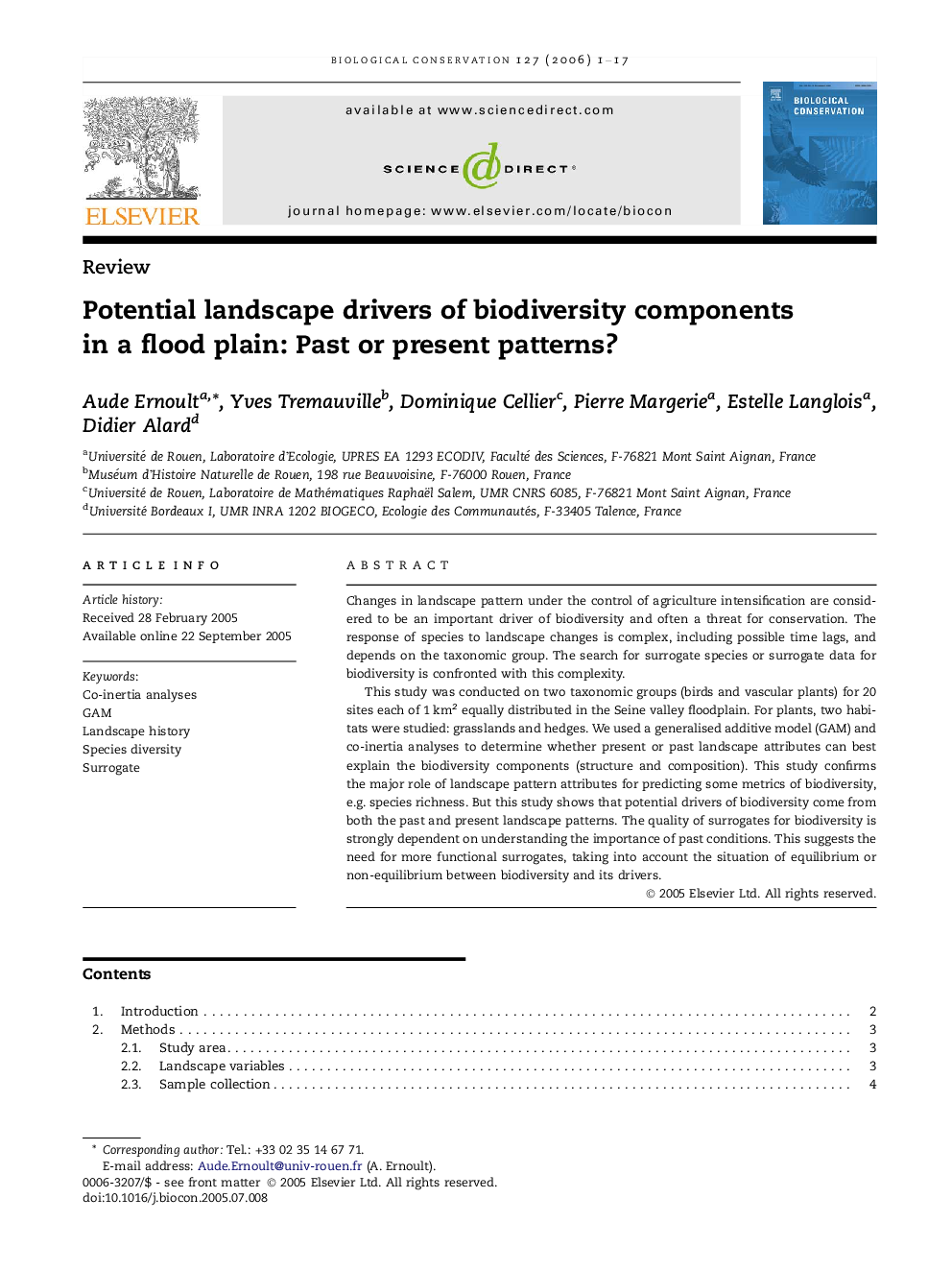| Article ID | Journal | Published Year | Pages | File Type |
|---|---|---|---|---|
| 4387904 | Biological Conservation | 2006 | 17 Pages |
Changes in landscape pattern under the control of agriculture intensification are considered to be an important driver of biodiversity and often a threat for conservation. The response of species to landscape changes is complex, including possible time lags, and depends on the taxonomic group. The search for surrogate species or surrogate data for biodiversity is confronted with this complexity.This study was conducted on two taxonomic groups (birds and vascular plants) for 20 sites each of 1 km2 equally distributed in the Seine valley floodplain. For plants, two habitats were studied: grasslands and hedges. We used a generalised additive model (GAM) and co-inertia analyses to determine whether present or past landscape attributes can best explain the biodiversity components (structure and composition). This study confirms the major role of landscape pattern attributes for predicting some metrics of biodiversity, e.g. species richness. But this study shows that potential drivers of biodiversity come from both the past and present landscape patterns. The quality of surrogates for biodiversity is strongly dependent on understanding the importance of past conditions. This suggests the need for more functional surrogates, taking into account the situation of equilibrium or non-equilibrium between biodiversity and its drivers.
